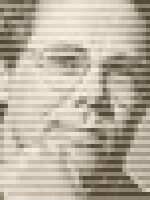Building blocks of life. That's what NASA will attempt to bring back from space this weekend.
Scientists say the unmanned Stardust spacecraft is carrying thousands of microscopic particles cast off by Comet Wild 2. More than 4 billion years old, the particles could provide clues to the origins of the solar system and even life on Earth.
The spacecraft's cargo is expected to land in early morning darkness Sunday at the Dugway Proving Ground in the desert west of Salt Lake City, Utah.
NASA likes this remote desert setting for its unmanned landings because it is vast and secure. Military ranges cover thousands of square miles, and only antelope, jack rabbits and wild horses roam free here. Plus there's plenty of open space if something goes wrong, like the last time a similar landing was attempted.
NASA's unmanned Genesis spacecraft smashed into the soft desert soil here 16 months ago. Its parachutes had failed to open because the sensor that triggers them was installed backward. The same system of sensor and parachutes is supposed to bring Stardust gently to Earth. NASA mission system manager Ed Hirst is confident it will work this time.
"We took the lessons we learned at Genesis, and we went through a very rigorous and extensive process of looking at the Stardust sample return capsule, digging out the blueprints, going through all the testing that was done pre-launch," said Hirst. "We're convinced that that is not going to happen on Stardust. But there is some residual risk that something can happen on return. We think the probability of that is very low at this point."
For billions of years, Wild 2 has carried primitive dust from the early solar system. The comet is a frozen chunk of dust and ice. As it traveled from the cold fringes of the solar system to the relative warmth of the interior, portions of it melted, shedding dust that pre-dates the sun and the planets.
Two years ago, Stardust met up with the comet's cloudy exterior to grab some of that ancient material. Now those particles are headed for a desert landing at Dugway Proving Ground.
"These are literally the building blocks of our planetary system," said Don Brownlee, a University of Washington astronomer and principal investigator for the Stardust mission. "Personally, I feel a strong attachment to this thing and we should all feel a strong attachment to it because the fact is all the atoms in our bodies -- the carbon atoms and the oxygen, nitrogen, potassium and calcium and so forth -- all those atoms were in stardust rings ... before the solar system formed."
Scientists hope that studying the comet particles will tell more about how life on Earth came to be. The studies will begin after Stardust's cargo is retrieved and shipped to the Johnson Space Center in Houston. There should be enough cosmic dust to keep scientists busy for decades.
Copyright 2022 NPR. To see more, visit https://www.npr.org.



